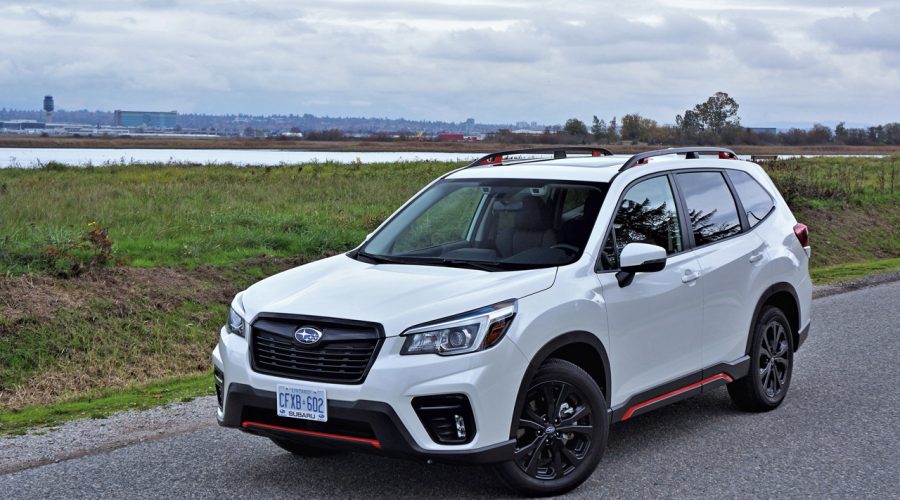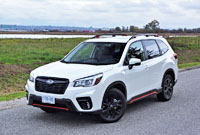
As you may have noticed, orange is all the rage as far as fashion colours go. This works well for me because I happen to like most mixtures of red and yellow, but sometimes a brand takes their pumpkin, ochre, tangerine, or fire hue too far, resulting in a styling faux pas.
It’s not the thick orange striping along the otherwise matte black lower exterior panels that puts me off the new 2019 Forester Sport, but rather the metallic orange dash vents and orange painted shifter surround that assault my senses. I wish they’d just left it at orange contrasting thread.
This said the new fifth-generation Forester is a big step up over its predecessor, and while Sport trim wouldn’t be my first choice due to orange overload, they’ve got plenty of other trims and colour choices to pick from. What’s more, this new 2019 model has been thoroughly redesigned around the new Subaru Global Platform (SGP), which has resulted in greater refinement, capability and dynamic performance, plus more interior roominess.
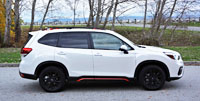
The new Forester is now 15 millimetres (0.6 inches) longer from front to back at 4,625 mm (182.1 inches), with 30 mm (1.2 inches) more wheelbase at 2,670 mm (105.1 inches), while it’s also 21 mm (0.8 inches) wider including its mirrors at 2,052 mm (80.8 inches), or 20 mm (0.8 inches) wider not including its mirrors at 1,815 mm (71.4 inches). Its front and rear track has widened too, now up 20 and 15 mm (0.8 and 0.6 inches) respectively to 1,565 and 1,570 mm (61.6 and 61.8 inches), which, along with the Forester’s other dimensional and mechanical changes has caused a one-metre (3.3-foot) larger curb to curb turning circle of 5.4 metres (17.7 feet).
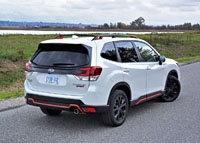
Despite maintaining its minimum ground clearance at 220 mm (8.6 inches), the new Forester is actually 5 mm (0.2 inches) lower in height than its predecessor with its roof rails included at 1,730 mm (68.1 inches), while its base curb weight has increased by just 26 kilograms (57.3 lbs) at 1,569 kilos (3,459 lbs) when compared to the previous model with its optional CVT, which is now standard. Still, the fully loaded 2019 Forester Premier now weighs in at 1,630 kg (3,593 lbs), which actually makes this top-line model a surprising 56 kg (123.4 lbs) lighter than the ritziest version of the 2018 model in spite of its greater size.
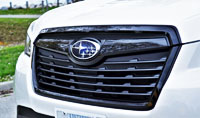
Along with a more spacious passenger compartment that can really be felt when seated inside, the new Forester improves cargo capacity by 29 litres (1.0 cubic-foot) behind the 60/40 split-folding rear seatbacks in base trim, from 974 to 1,003 litres (34.4 to 35.4 cubic feet), and by 40 litres (1.4 cubic feet) in base trim when those seats are laid flat, from 2,115 to 2,155 litres (74.7 to 76.1 cubic feet). When the optional sunroof is added, which encroaches slightly on overhead space, the difference from old to new grows to 43 litres (1.5 cubic feet) behind the rear seatbacks, from 892 to 935 litres (31.5 to 33.0 cubic feet), and 68 litres (2.4 cubic feet) when those rear seats are lowered, from 1,940 to 2,008 litres (68.5 to 70.9 cubic feet). This is a significant improvement that can really make a difference when faced with a large load of gear.
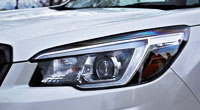
Back up front, the driver’s seat is quite comfortable and included two-way powered lumbar support that matched up well to the small of my back, while the driving position is excellent with plenty of rake and reach from the tilt and telescopic steering column. In Sport trim the steering wheel gets a nice leather-wrapped rim with orange stitching, its spokes filled with nicely organized controls that even include an “S#” mode for enhancing performance, or alternatively adaptive cruise control switchgear for a more relaxed highway driving experience.
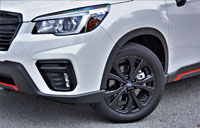
A whole host of Subaru EyeSight advanced driver assistance systems come standard with the Forester Sport and other top trim levels, these including pre-collision braking, pre-collision brake assist, pre-collision throttle management, lead vehicle start alert, lane departure warning, lane sway warning, lane keep assist, reverse automatic braking, and just noted adaptive cruise control.
But I’m getting ahead of myself. The 2019 Forester starts at $27,995, which while $2,000 more than last year’s base model now includes standard LED headlamps, a stylishly advanced safety technology that previously required a move up to Limited trim in order to partake, and one that’s still optional with most of its rivals including the totally redesigned 2019 RAV4 and recently redesigned Honda CR-V—the Mazda CX-5 already comes standard with LED headlights, as does the refreshed 2019 Jeep Cherokee. The Forester’s include automatic on/off as well, so you won’t always have to remember to turn them on and off manually, this standard feature part of last year’s Convenience upgrade, while new standard automatic climate control gets pulled up from the 2018 model’s Touring trim.
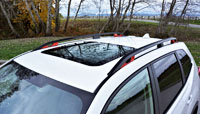
Also positive, a new electromechanical parking brake replaces the old handbrake, freeing up space between the front seats and modernizing the driving experience, while auto vehicle hold now replaces the old hill holder system that previously only came with the manual transmission, the latter now discontinued as noted earlier. Now that Subaru’s Lineartronic continuously variable automatic transmission (CVT) is standard across the line, its impressive X-Mode off-road system with Hill Descent Control, and SI-Drive drive mode selector are now standard too.
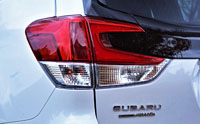
Together with the CVT and Subaru’s much praised Symmetrical full-time all-wheel drive system that remains standard, all 2019 Foresters get a new direct-injection enhanced 2.5-litre four-cylinder boxer engine that’s good for 182 horsepower and 176 lb-ft of torque, resulting in a 12-horsepower and 2-lb-ft gain over last year’s identically sized base engine.
The upgraded drivetrain now includes an auto start/stop system that automatically shuts off the engine when it would otherwise be idling, helping reduce emissions while improving fuel economy, but my tester’s wasn’t without fault. In fact, it was by far the roughest idle-stop system I’ve ever experienced, jerking the steering wheel sideways and even jarring my arm once when doing so. To be clear it didn’t go into fits and spats every time it engaged, but rather shut off and started up smoothly more often than not. Nevertheless, once in awhile it was a demon possessed, so I think Subaru will want to sort it out.
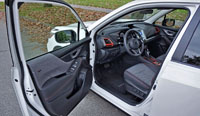
On the positive, the sometimes spastic auto start/stop system helped the 2019 Forester achieve 0.2 L/100km savings in combined city/highway driving despite the increase in performance, from 9.2 L/100km city, 7.4 highway and 8.4 combined in the old model to 9.0 city, 7.2 highway and 8.2 combined in the new one.
This said, a major source of disappointment for the 2019 model isn’t with this improved base powertrain, but rather the discontinuation of Subaru’s wonderful 2.0-litre turbocharged engine upgrade that previously put out 250 horsepower and 258 lb-ft of torque yet still managed a relatively thrifty 10.2 L/100km city, 8.6 highway and 9.5 combined fuel economy rating. True, few vehicles in this class offer such a formidable optional engine, but it was nevertheless an important differentiator in a market segment that’s highly competitive.
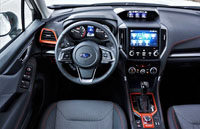
As it is, the 2019 Forester is more about comfort than speed. This philosophy certainly hasn’t hurt market leaders like the Honda CR-V or Toyota RAV4 in years past (although recent updates mean they’re both more formidable in a straight line than the Forester), but even with the aforementioned S# sport mode engaged, an exclusive Forester Sport feature that provides more immediate throttle response, there’s nary a hint of WRX in Subie’s little family hauler. Therefore, with performance now of secondary importance the focus is on efficiency, comfort and practicality, all of which are Forester strengths.
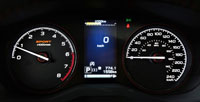
We’ve covered efficiency, leaving us with a really smooth ride and even smoother Lineartronic CVT. It’s hard to knock a CVT in this type of vehicle. Its simple, reliable design and creamy power delivery is perfect for tooling around town, whirring down the highway, or trekking across a countryside gravel road, and when combined with the Forester’s fully independent front strut and double-wishbone rear suspension setup it’s comfortable over most any road surface. Handling is plenty capable too, and braking is strong, especially in Sport, Limited and Premier trims that come upgraded with 316 by 30 mm front discs. The new Forester is really a nicely balanced compact SUV.
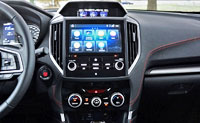
Trims in mind, the 2019 Forester is now available in base 2.5i, Convenience, Touring, Sport, Limited and Premier grades. Along with everything already mentioned, the base model includes standard power-adjustable heated side mirrors, variable intermittent wipers, steering wheel controls, cruise control, filtered air conditioning, a backup camera with dynamic guidelines, Bluetooth with audio streaming, StarLink smartphone integration with Aha radio, HD and satellite radio, two USB ports/iPod interfaces, an aux input, heatable front seats, roof rails, the usual active and passive safety features including an airbag for the driver’s knees, plus more.

Of note, the standard infotainment touchscreen is now 0.3 inches larger in diameter at 6.5 inches, and also features standard Apple CarPlay and Android Auto smartphone connectivity that wasn’t even optional before.
Standard features are even more generous in second-rung Convenience trim, which for $30,295 includes everything from the base model plus fog lamps, a rear rooftop spoiler, 17-inch alloys replacing the standard 17-inch steel wheels with covers, a windshield wiper de-icer, silver finish interior accents, chrome interior door handles, a leather-wrapped steering wheel, paddle shifters, a colour TFT multi-information display within the gauge cluster, a 6.3-inch colour multi-function display atop the dash that’s controllable via steering wheel-mounted switchgear, two more stereo speakers for a total of six, dual-zone automatic climate control (the base model’s auto HVAC is single-zone), sunvisor extensions, illuminated vanity mirrors, premium cloth upholstery, a 10-way powered driver’s seat with lumbar support, a flip-down rear centre armrest with integrated cupholders, etcetera.
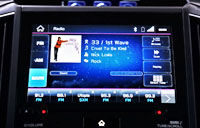
For $1,500 more you can add the EyeSight suite of advanced driver assistance systems noted earlier, an upgrade package that also includes proximity-sensing keyless access, pushbutton ignition, and a retractable cargo cover.
Incidentally, EyeSight not only comes standard with my Sport tester, but it’s included as standard in all grades above the two lowest trims. This means the $32,995 Touring model gets EyeSight too, plus everything already mentioned as well as automatic high beam assist, a large power-sliding glass sunroof with a sunshade, and a powered tailgate with memory function.
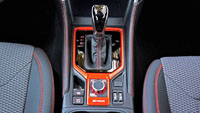
Above this, the as-tested Sport model, plus the Limited and Premier trims get a new two-mode X-Mode off-road system that’s capable of even greater go-anywhere prowess thanks to separate settings for snow and dirt, as well as deep snow and mud. Of course, I had to take it to my favourite local off-road play area for a little bushwhacking and it performed extremely well for this class. This said there aren’t many true 4x4s in the compact SUV segment anymore, leaving the new Forester’s off-road capability somewhere between the very capable Jeep Cherokee and everything else.
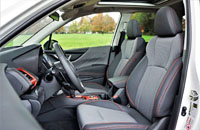
Back to features, the top three trims improve safety further via standard steering responsive headlights and Subaru’s Side/Rear Vehicle Detection (SRVD) system, while each model also includes a leather shift knob plus a new 8.0-inch touchscreen that adds an inch to the diameter of last year’s top-line infotainment display. Once again the interface includes Apple CarPlay and Android Auto where there wasn’t such advanced smartphone connectivity last year, while these upper trims also get dual rear USB ports for a new total of four, plus A/C ducts on the backside of the centre console, and reclining rear seats.
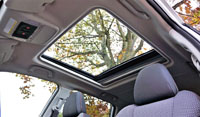
As mentioned earlier, all-new $34,995 Sport trim is the visual standout of the 2019 Forester lineup, whether that’s a positive or negative in your view. Along with all the orange it gets a unique gloss black grille, special front corner grilles, a larger rear spoiler, a blackened trim strip that runs across the rear liftgate before striking through the taillights, and a unique rear under-guard. The Sport also features exclusive dark metallic 18-inch alloys, while LED daytime running lights, vertically stacked LED fog lamps and LED turn signals integrated within the mirror caps add to its upmarket appeal.
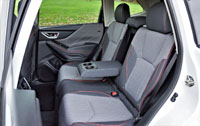
I should also make mention of $37,695 Limited trim despite this review being mostly about the Sport. The Limited eliminates the Sport’s performance upgrades yet keeps most of its convenience and luxury improvements, while adding unique 18-inch 10-spoke bright-finish machined alloy wheels, a premium grille, chrome detailing around the fog lamp bezels and side windows, auto-dimming side mirrors with approach lighting and reverse tilt (the latter item a Subaru first), an auto-dimming rearview mirror with an integrated compass, chrome trimmed primary gauges, a heatable steering wheel rim, GPS navigation, SiriusXM Traffic and Travel Link with weather, sports and stock market information, an eight-speaker, 440-watt Harman Kardon audio system with an eight-channel amplifier, leather upholstery in black or platinum, silver contrast stitching throughout, driver’s seat memory, heatable rear outboard seats, and one-touch folding rear seatbacks.
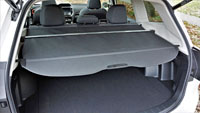
Lastly, for just $1,800 more you can opt for $39,495 Premier trim, a new top-of-the-line model that pushes the Forester up into luxury SUV levels of style and refinement. Premier trim once again includes the vertical LED fog lamps from the Sport within unique satin-silver trimmed bezels, as well as special aluminum-look satin-silver trim on the front fascia, side mirror caps, roof rail posts, side sills, and rear bumper. Additionally, exclusive 18-inch five-spoke machined alloy wheels combine with chromed exterior door handles and a stainless steel rear bumper step pad to spiff up the look further.
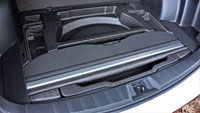
Inside, the Forester Premier features exclusive brown leather upholstery that I really like, plus an eight-way power-adjustable front passenger seat, while Subaru’s brand new DriverFocus driver fatigue and distracted driving mitigation system uses facial recognition to detect drowsiness or distraction.
By the way, all of the trim details and prices were verified at CarCostCanada, where you can also find dealer invoice pricing that could save you thousands when negotiating with your Subaru dealer, plus they have rebate information on any discounts that might be available to you.
No matter the trim, all of the 2019 Forester’s features come in a cabin that boasts improved style, refinement and attention to detail, from additional soft-touch surfaces to some really nice dark satin metallic accents. Subaru even adds soft padded leatherette sides to the lower centre stack and console, the result being a wonderfully upscale look and feel. The geometric grey fabric used for the Sport’s door panel and seat upholstery is attractive, and I really like the orange contrast stitching throughout the interior.
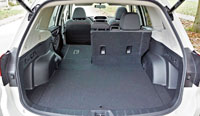
The analogue gauge cluster is bright and easily legible, with a large, colourful albeit straightforward multi-information display at centre, the latter complemented by a much larger and more complex MID atop the centre dash, that’s fully functional and filled with great looking high-resolution graphics. It even includes a trio of default meters for water and oil temperatures, plus average speed. Likewise the upgraded infotainment system is the best ever offered in a Forester, with bright, attractive graphics including album artwork when using satellite radio, wonderful depths of contrast and colour, and excellent resolution quality. All of the aforementioned functions worked well too.
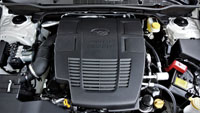
This last comment really sums up the entire 2019 Forester. The Sport may not be as fun to drive as last year’s top-line turbocharged model, but when compared to the previous base powertrain, which sold in much greater numbers, it’s a significant step forward, while the rest of this compact SUV is better in every way. This said it’s up against some formidable challengers, but Subaru’s faithful are as loyal as loyal can be, meaning that it should be able to hold onto most of its regular clientele while also growing its base.
Early numbers show that it’s off to a good start, with December 2018 sales up 30 percent over the same month in 2017, while year-over-year sales are up 6 percent. Factoring in that Subaru sold the outgoing 2018 Forester for most of last year and it’s clear the new model is bolstering the bottom line, as it should be, so its onward and upward for this much improved model. Yes, the new Forester is easy to recommend, even in Sport trim, but make sure to keep a set of polarized sunglasses nearby for guarding against orange overwhelm.

